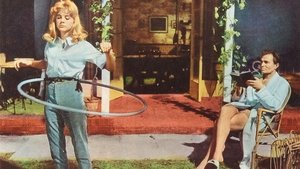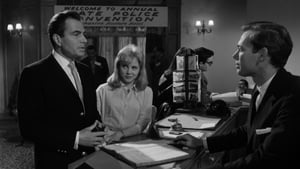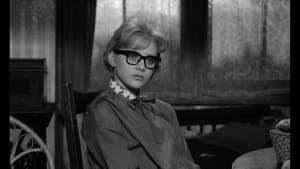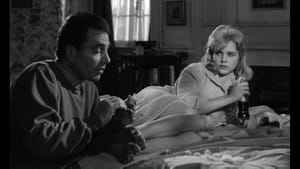Video Sources 0 Views
- Watch trailer
- Lolita 1962 Colorized

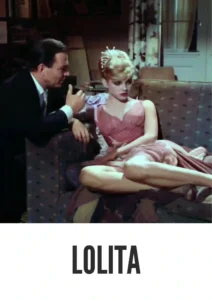
Synopsis
Table of Contents
Toggle
Step into the complex world of Lolita, a cinematic adaptation of Vladimir Nabokov’s controversial novel, directed by the legendary Stanley Kubrick. Released in 1962, this film has been colorized to enhance its visual storytelling while preserving the intricate narrative that explores themes of obsession, desire, and moral ambiguity. Featuring powerful performances from James Mason as Humbert Humbert and Shelley Winters as Charlotte Haze, Lolita delves into the darker aspects of human relationships, making it a compelling watch for fans of psychological drama.
The story revolves around Humbert Humbert, a middle-aged literature professor who relocates to Ramsdale, New Hampshire, to teach at Beardsley College. In search of a room to rent for the summer, he meets the widowed Charlotte Haze and her alluring 12-year-old daughter, Dolores, whom he nicknames Lolita. Captivated by Lolita’s youthful charm, Humbert becomes increasingly obsessed with her.
Despite initially marrying Charlotte to stay close to Lolita, his obsession leads him into a web of deceit and manipulation. After a tragic accident claims Charlotte’s life, Humbert seizes the opportunity to take Lolita away from her previous life. Their journey across America is fraught with tension as they navigate their complex relationship while being pursued by Clare Quilty, a playwright intent on exposing Humbert’s true intentions.
As Humbert and Lolita travel from one motel to another, their relationship evolves into something deeply problematic and morally questionable. The film captures their tumultuous bond against a backdrop of societal norms and personal desires, ultimately leading to devastating consequences.
The film features an impressive cast that brings this provocative story to life:
-
James Mason as Humbert Humbert
-
Shelley Winters as Charlotte Haze
-
Sue Lyon as Dolores “Lolita” Haze
-
Peter Sellers as Clare Quilty
-
Jerry Stovin as Dr. Zempf
-
Lois Maxwell as Miss Lick
Lolita is primarily categorized as a psychological drama with elements of dark comedy. Its exploration of taboo subjects and complex character dynamics sets it apart from conventional dramas, making it a significant work in Kubrick’s filmography.
When Lolita was released in 1962, it faced significant scrutiny due to its provocative subject matter. The novel had already garnered controversy for its themes surrounding pedophilia and obsession. Kubrick’s adaptation sought to navigate the restrictions imposed by the Motion Picture Production Code while still delivering a compelling narrative. The film’s release marked an important moment in cinema history as it challenged societal norms and pushed boundaries regarding what could be depicted on screen.
Despite facing criticism upon its release, Lolita has since been recognized for its artistic merit and has gained a cult following. The film’s ability to provoke thought and discussion about morality and desire continues to resonate with audiences today.
The colorized version of Lolita has been carefully restored using modern digital techniques that enhance the film’s visual appeal while maintaining its original atmosphere. This process involved analyzing the grayscale tones of the original footage and applying appropriate colors to each scene. The result is a vibrant viewing experience that breathes new life into this classic film while introducing it to contemporary audiences.
While some may debate the merits of colorizing classic films, this version aims to attract new viewers who may be hesitant to engage with black-and-white cinema. By presenting Lolita in color, filmmakers hope to preserve its legacy for future generations.
-
: Stanley Kubrick
-
: Vladimir Nabokov
-
: Nelson Riddle
-
: Oswald Morris
-
: Anthony Harvey
-
: Metro-Goldwyn-Mayer, Seven Arts Productions
-
: 153 minutes
-
: MP4
-
: HD (1080p)
-
: Compatible with most devices including smartphones, tablets, computers, and smart TVs.
Upon its release, Lolita polarized critics due to its controversial themes but has since been reevaluated as a significant work in cinematic history. Kubrick’s direction combined with Mason’s haunting performance creates an unsettling yet captivating narrative that continues to spark discussions about morality in art. As time has passed, many have come to appreciate the film not only for its bold storytelling but also for its artistic achievements.
-
: What is Lolita about?
-
A: Lolita tells the story of Humbert Humbert, a literature professor who becomes infatuated with his landlady’s young daughter, leading to a complex and controversial relationship.
-
-
: Is this version of Lolita colorized?
-
A: Yes, this version has been professionally colorized for an enhanced viewing experience.
-
-
: What makes Lolita interesting for classic film fans?
-
A: The film offers a unique blend of psychological drama and dark comedy while exploring taboo subjects that challenge societal norms.
-
-
: What is the download format?
-
A: The download format is MP4, compatible with most devices.
-
-
: What resolution is the download?
-
A: The resolution is HD (1080p), providing high-quality visuals for your viewing pleasure.
-
Watch Lolita Today!



